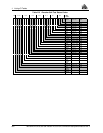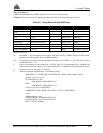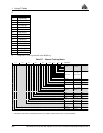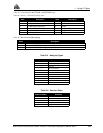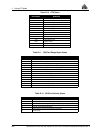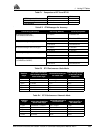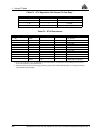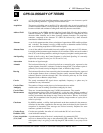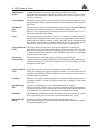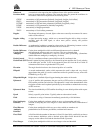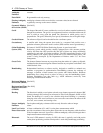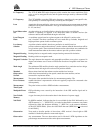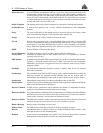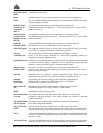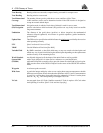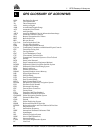
K GPS Glossary of Terms
268 MiLLennium GPSCard SW Version 4.503/4.52 Command Descriptions Manual Rev 2
Communication A method established for message transfer between a talker and a listener
Protocol which includes the message format and the sequence in which the messages are to be
transferred. Also includes the signalling requirements such as bit rate, stop bits, parity,
and bits per character.
Control Segment The Master Control Station and the globally dispersed Reference Stations used to
manage the GPS satellites, determine their precise orbital parameters, and synchronize
their clocks.
Coordinated This time system uses the second-defined true angular rotation of the Earth Universal
Time measured as if the Earth rotated about its Conventional Terrestrial Pole.
(UTC) However, UTC is adjusted only in increments of one second. The time zone of UTC is
that of Greenwich Mean Time (GMT).
Course The horizontal direction in which a vessel is to be steered or is being steered; the
direction of travel through the air or water. Expressed as angular distance from reference
North (either true, magnetic, compass, or grid), usually 000° (north), clockwise through
360°. Strictly, the term applies to direction through the air or water, not the direction
intended to be made good over the ground [see Track]. Differs from heading.
Course Made Good The single resultant direction from a given point of departure to a subsequent
(CMG) position; the direction of the net movement from one point to the other. This often varies
from the track caused by inaccuracies in steering, currents, cross-winds, etc. This term
is often considered to be synonymous with Track Made Good, however, Course Made
Good is the more correct term.
Course Over The actual path of a vessel with respect to the Earth (a misnomer in that
Ground (COG) courses are directions steered or intended to be steered through the water with respect to
a reference meridian); this will not be a straight line if the vessel's heading yaws back
and forth across the course.
Cross Track Error The distance from the vessel’s present position to the closest point on a great
(XTE) Circle line connecting the current waypoint coordinates. If a track offset has been
specified in the GPSCard SETNAV command, the cross track error will be relative to
the offset track great circle line.
Cycle Slip When the carrier phase measurement jumps by an arbitrary number of integer cycles. It
is generally caused by a break in the signal tracking due to shading or some similar
occurrence.
Dead Reckoning The process of determining a vessel’s approximate position by applying
(DR) from its last known position a vector or a series of consecutive vectors representing the
run that has since been made, using only the courses being steered, and the distance run
as determined by log, engine rpm, or calculations from speed measurements.
Destination The immediate geographic point of interest to which a vessel is navigating. It may be the
next waypoint along a route of waypoints or the final destination of a voyage.
Differential GPS A technique to improve GPS accuracy that uses pseudorange errors at a
(DGPS) known location to improve the measurements made by other GPS receivers within the
same general geographic area.



